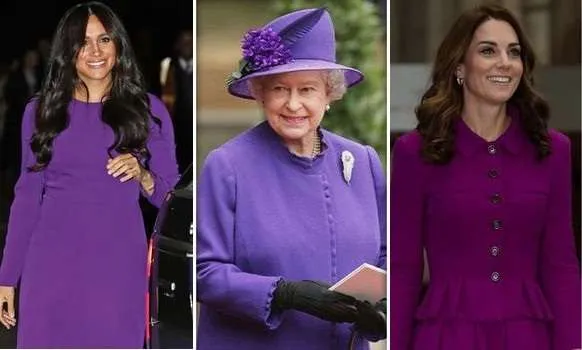Table of Contents
In a world filled with an abundance of colors, one hue stands out with regal magnificence: the royal color purple. From ancient civilizations to modern-day fashion, purple has captivated hearts and minds, exuding an air of luxury, power, and mystery.
In this comprehensive article, we dive deep into the enchanting world of the royal color purple, exploring its historical significance, cultural symbolism, and its influence in various industries. Join us on this vibrant journey as we unravel the secrets behind this captivating shade.
What Is Royal Purple?
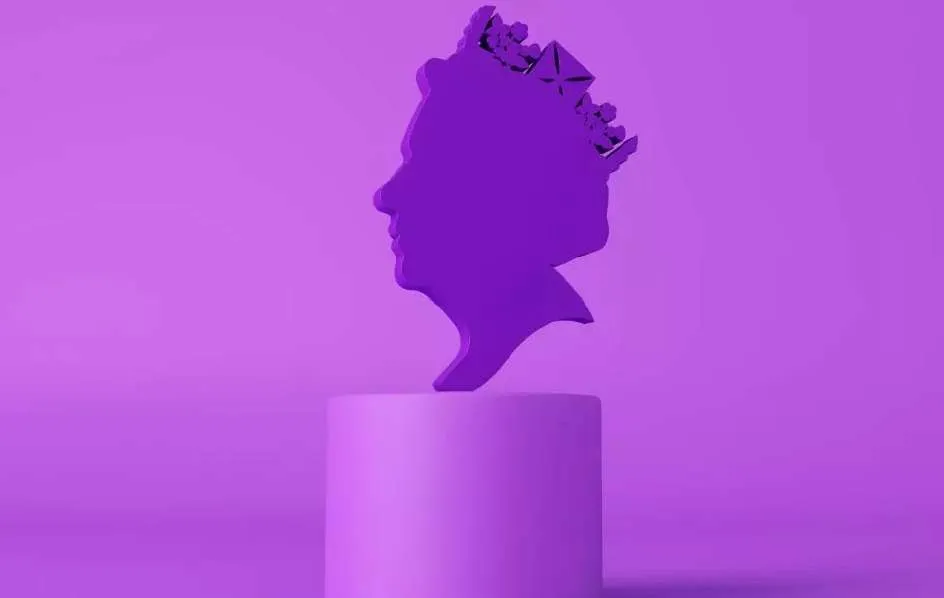
Royal Purple or Royal Color Purple, also known as Tyrian purple, imperial purple, or imperial dye, is a captivating shade that is created by blending rich red and deep blue hues. This exquisite color has a long and fascinating history, dating back to ancient times.
The name “Tyrian purple” originates from the city of Tyre, where this prestigious dye was first discovered and produced. Renowned for its luxurious and regal allure, Royal Purple has been associated with nobility, power, and prestige throughout the ages.
Its captivating beauty and symbolic significance led to its official inclusion as a Crayola crayon color in 1990, allowing children and artists alike to explore the magnificence of this extraordinary hue.
The Historical Significance of Royal Color Purple
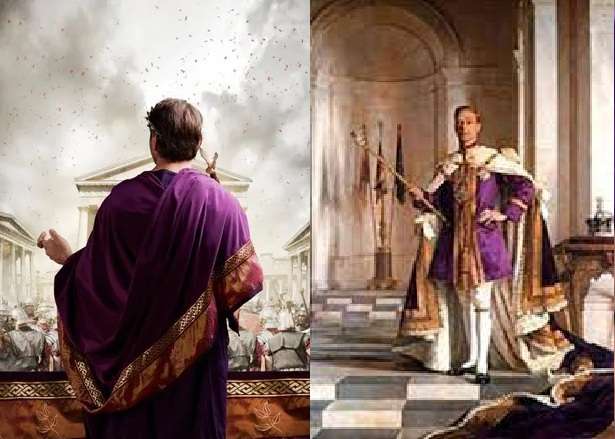
Throughout history, the royal color purple has held a special place, evoking a sense of majesty and power. Its origins can be traced back to ancient civilizations, where purple dyes were precious and coveted. In this section, we delve into the historical significance of royal color purple, exploring its connection to the Phoenicians, its prominence in ancient Egypt, and its symbolic value in Imperial Rome.
The Ancient Origins: Tyrian Purple and the Phoenicians
In the annals of color history, one shade stands out: Tyrian purple. It originated from a small mollusk, the murex snail, found in the Mediterranean Sea. The Phoenicians, renowned traders and seafarers, discovered the secret of extracting this vibrant dye from the snail’s gland, and it became their prized possession.
Tyrian purple quickly became synonymous with luxury and wealth. The labor-intensive process of dye extraction made it an expensive and exclusive color, accessible only to the elite. Wearing garments dyed with Tyrian purple became a status symbol, reserved for kings, queens, and the ruling class.
Purple in Ancient Egypt: A Color Fit for Royalty
In the ancient land of Egypt, Royal color purple held great significance. It was associated with royalty, spirituality, and the divine. The pharaohs, believed to be gods in human form, adorned themselves with purple attire, emphasizing their divine status.
Egyptian artisans developed their own methods of obtaining purple dyes. One such method involved utilizing a plant known as the woad, which produced a vibrant purple hue. This plant-based dye, along with imported Tyrian purple, adorned the walls of palaces, temples, and burial chambers, encapsulating the power and prestige of the Egyptian rulers.
Purple in Imperial Rome: An Emblem of Power and Prestige
The influence of purple continued to spread across civilizations, reaching its pinnacle in Imperial Rome. Purple became synonymous with authority and dominion, symbolizing the mighty Roman Empire. Emperors and high-ranking officials donned purple robes, displaying their status and commanding respect.
The Romans obtained their purple dye from a different species of mollusk, the spiny dye-murex. The vibrant purple color produced by this mollusk, known as Imperial Purple, was highly valued and tightly controlled by the Roman government. The use of purple in Roman society was strictly regulated, with laws dictating who could wear the color, reinforcing its association with power and prestige.
The historical significance of royal color purple is deeply intertwined with the rise and fall of ancient civilizations. From the Phoenicians’ discovery of Tyrian purple to the grandeur of purple in ancient Egypt and the might of Imperial Rome, purple has left an indelible mark on history. In the following sections, we will explore the symbolism, influence, and diverse applications of this majestic hue.
Royal Color Purple and British Monarchy
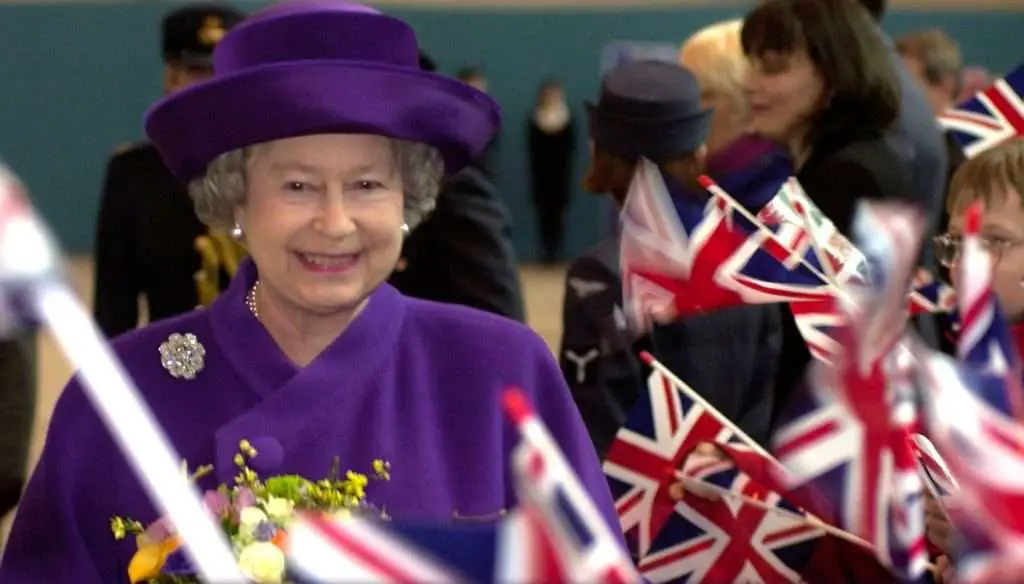
The Royal Color Purple holds a special significance when it comes to its association with the British Royal Family. Throughout history, purple has been closely linked to royalty, power, and nobility, making it a natural choice for the British monarchy.
Purple as a Symbol of Royalty:
Purple has long been associated with regality and has been referred to as the “color of kings.” In ancient times, purple dye was rare and expensive to produce, making it a color reserved for the elite. It was highly sought after and became a symbol of prestige and authority. The British Royal Family, known for its rich history and royal lineage, has embraced purple as a color that represents their elevated status and noble heritage.
Purple in Royal Clothing and Accessories:
Purple has been prominently featured in the clothing and accessories of the British Royal Family. Queen Elizabeth II, as well as other members of the royal household, have been seen wearing shades of purple on numerous occasions. Whether it’s a vibrant purple dress, a regal purple hat, or a delicate purple brooch, the royal family’s use of purple highlights their connection to tradition, grandeur, and elegance.
You may also read: Why Queen Elizabeth known as the “Princess Auto Mechanic”? A Little-Known World War II Story
Purple in Royal Ceremonies and Events:
Purple is often seen in royal ceremonies and events, symbolizing the royal family’s presence and participation. From the ornate purple robes worn during the coronation ceremonies to the purple decorations adorning royal residences, the color purple sets a majestic tone and adds a touch of regal splendor to these important occasions.
Purple in Royal Heraldry and Emblems:
Purple is also incorporated into the royal heraldry and emblems associated with the British monarchy. The royal coat of arms, for example, features various elements in purple, such as the mantling surrounding the shield. These visual representations further reinforce the association of purple with the British Royal Family and their esteemed position.
The Symbolism and Meaning of Royal Color Purple
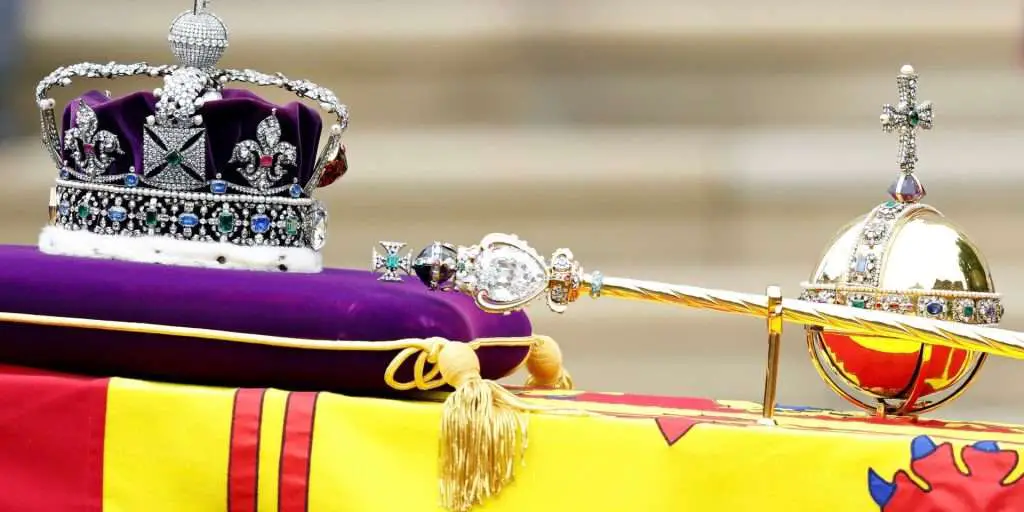
Royalty and Nobility: Purple as the Color of Kings and Queens
Throughout history, purple has been associated with royalty and nobility. The deep, rich hue of royal color purple symbolizes power, authority, and grandeur. In many cultures, purple was reserved exclusively for monarchs, signifying their elevated status above ordinary citizens. From ancient rulers to modern-day monarchies, purple remains a steadfast symbol of regal prestige.
Spirituality and Mysticism: Purple’s Connection to the Divine
Purple has long been linked to spirituality and the mystical realm. In various belief systems and religious traditions, purple represents spiritual awakening, enlightenment, and higher consciousness. The ethereal beauty of purple invokes a sense of mystery and introspection, making it a favored color in meditation practices and sacred rituals.
In Western spirituality, purple is associated with the crown chakra, the energy center located at the top of the head, symbolizing spiritual connection and divine wisdom. The color purple is believed to facilitate spiritual growth, inspire inner peace, and open the channels to higher realms of consciousness.
Creativity and Imagination: Purple as an Expression of Artistry
Purple’s vibrant and captivating nature stimulates the creative faculties and ignites the imagination. Artists, writers, and musicians often find inspiration in the enigmatic allure of royal color purple. Its blend of blue and red hues creates a harmonious fusion, representing the balance between rationality and passion, logic and emotion.
In the realm of art, purple has been celebrated for its ability to evoke emotions and convey a sense of depth and complexity. From the masterpieces of Van Gogh, who frequently incorporated shades of purple in his paintings, to the poetic descriptions of purple landscapes in literature, this regal hue continues to serve as a muse for artistic expression.
The Influence of Royal Color Purple in Fashion and Design
Purple Fashion Through the Ages: From Royalty to Runways
The influence of royal color purple on the world of fashion spans centuries. From the opulent robes of monarchs to the runway collections of renowned designers, purple remains a perennial favorite. Its versatility allows for a wide range of interpretations, from soft lavender tones to bold violet shades.
In the past, purple garments were a symbol of status and wealth, worn exclusively by the elite. Today, purple has become more accessible, allowing people from all walks of life to incorporate this majestic hue into their wardrobe. Purple dresses, suits, accessories, and even hair color choices reflect a desire for individuality, sophistication, and a touch of regality.
Purple as a Statement: Embracing Individuality and Boldness
In a world where conformity often prevails, wearing purple can be a bold statement of personal style and individuality. The color’s inherent uniqueness and rarity make it an ideal choice for those who wish to stand out from the crowd. Whether it’s a purple handbag, a daring purple lipstick, or a pair of purple sneakers, incorporating this distinctive color into one’s fashion choices exudes confidence and a willingness to embrace one’s own uniqueness.
Designing with Purple: Inspiring Spaces and Decor
Purple’s versatility extends beyond the realm of fashion, permeating the world of interior design. From lavish palaces to modern living spaces, purple has the ability to transform environments into luxurious and inviting havens. Whether used as an accent color or as the primary palette, purple brings a sense of opulence and sophistication to any room.
In interior design, shades of purple can evoke various moods and atmospheres. Lighter shades such as lavender and lilac create a serene and calming ambiance, ideal for bedrooms and relaxation areas. Deeper shades like royal purple and plum add drama and richness, making them well-suited for dining rooms or statement pieces of furniture.
By infusing spaces with royal color purple, designers can evoke a sense of elegance, creativity, and a touch of extravagance, ensuring a captivating and memorable experience for residents and visitors alike.
The Psychological Impact of Royal Color Purple
Elegance and Luxury: Purple’s Effect on Perceptions
One of the remarkable aspects of royal color purple is its ability to create a perception of elegance and luxury. The rich and sophisticated hue of purple is often associated with opulence and high-end experiences.
Whether it’s a purple velvet sofa in a luxurious hotel lobby or a deep purple evening gown worn on a red carpet, this regal color has the power to elevate surroundings and leave a lasting impression of grandeur.
Calm and Serenity: Purple’s Soothing Influence
Beyond its association with royalty and luxury, purple also possesses a calming and soothing effect. Soft lavender and lilac shades, reminiscent of blooming lavender fields, can promote relaxation and tranquility in various settings.
Purple’s calming influence makes it an excellent choice for bedrooms, meditation spaces, and wellness retreats, providing a serene and peaceful atmosphere conducive to rest and rejuvenation.
Creativity and Inspiration: The Purple Connection
Purple has long been linked to creativity and inspiration. Its unique blend of calm blue and passionate red stimulates the imagination, making it a favorite color among artists, writers, and innovators.
Whether it’s a painter seeking inspiration from the play of light on a purple-hued landscape or a writer finding solace in the depths of purple prose, this captivating color has a profound impact on creative endeavors.
In studies exploring the psychological effects of color, purple has been found to enhance creative thinking, problem-solving abilities, and imaginative expression. Surrounding oneself with shades of purple can create an environment that fosters innovation and sparks the flow of fresh ideas.
Exploring the Shades of Royal Color Purple
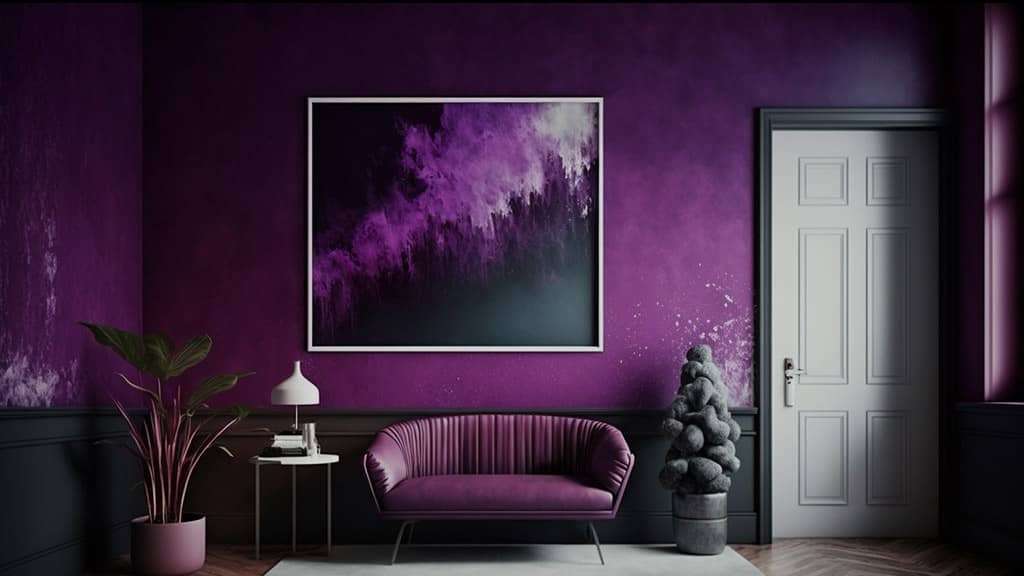
Lavender: A Delicate Balance of Tranquility and Grace
Lavender, with its delicate and soothing tone, embodies a sense of tranquility and grace. This pale shade of purple is often associated with relaxation, harmony, and purity. Lavender-colored flowers, such as lavender itself, evoke a sense of serenity and are frequently used in aromatherapy to promote relaxation and stress relief.
In interior design, lavender can create a calming and peaceful atmosphere, making it an excellent choice for bedrooms, bathrooms, and meditation spaces. Its gentle presence brings a touch of serenity to any environment, enveloping it in a sense of tranquility.
Violet: A Daring and Mysterious Shade
Violet, a bolder and deeper shade of purple, is associated with mystery, creativity, and spiritual depth. It carries an air of enigma and provokes curiosity. Violet stimulates the imagination and encourages introspection, making it a favorite color among those seeking to explore the hidden realms of the mind.
In fashion, violet can make a powerful statement. A deep violet gown or a striking violet suit exudes confidence and individuality, commanding attention and setting the wearer apart from the crowd. Its allure lies in its ability to combine the richness of purple with a touch of intrigue, making it a captivating choice for those who dare to embrace the unconventional.
Plum: Deep and Opulent, a Symbol of Richness
Plum, a dark and luscious shade of purple, is reminiscent of the ripe fruit from which it takes its name. This deep hue exudes opulence, sophistication, and a sense of richness. The color plum adds depth and drama to any space or ensemble, commanding attention and creating a luxurious ambiance.
In interior design, plum-colored accents, such as plush velvet pillows or a statement armchair, can transform a room into a sumptuous and lavish retreat. The indulgent allure of plum lends an air of extravagance, making it a perfect choice for those seeking a touch of luxury in their surroundings.
By exploring the various shades of royal color purple, we can tap into different moods, evoke specific emotions, and create unique experiences. Whether it’s the calm and serenity of lavender, the daring mystery of violet, or the opulence of plum, each shade of purple has its own distinct charm and impact.
The Cultural Significance of Royal Color Purple
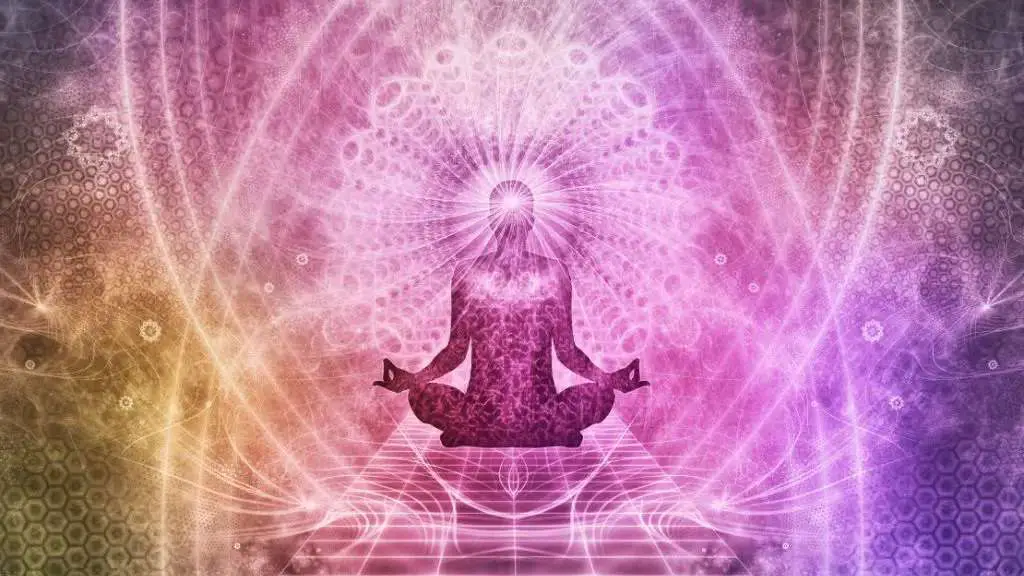
Purple in Religious and Spiritual Practices
Purple holds significant symbolism in various religious and spiritual practices around the world. In Christianity, purple is associated with Lent and the Passion of Christ, representing penance, royalty, and the suffering of Jesus. Purple vestments are worn by clergy during the season of Lent and on other solemn occasions.
In Hinduism, purple is connected to spiritual enlightenment and transformation. The color is often associated with deities, such as Lord Krishna and Lord Shiva, representing divinity, knowledge, and cosmic energy.
Additionally, purple holds cultural and spiritual significance in other belief systems, such as Buddhism, where it symbolizes spirituality, compassion, and the path to enlightenment.
Purple in Symbolic and Political Movements
Purple has also played a prominent role in various symbolic and political movements throughout history. The suffragette movement, advocating for women’s right to vote, adopted purple as one of its symbolic colors. It represented dignity, loyalty, and the pursuit of equality.
In recent years, purple has been associated with LGBTQ+ rights and the fight against homophobia and transphobia. The color purple is a symbol of diversity, inclusion, and solidarity within the LGBTQ+ community.
Purple in Cultural Traditions and Festivities
Purple is often present in cultural traditions, festivities, and celebrations around the world. In Mardi Gras celebrations, particularly in New Orleans, purple is one of the traditional colors, along with gold and green. Purple represents justice, green symbolizes faith, and gold signifies power. These colors are prominently displayed in parades, costumes, and decorations during the festive season.
In Japan, purple is associated with the sakura (cherry blossom) season. People gather to witness the ethereal beauty of the cherry blossoms, which include shades of purple. The fleeting nature of the blossoms is seen as a metaphor for the transient nature of life.
The Healing Properties of Royal Color Purple
Purple and Its Therapeutic Effects
Beyond its aesthetic appeal, royal color purple has been associated with various therapeutic benefits. In color therapy, purple is believed to have a calming and soothing effect on the mind and body. It is used to alleviate stress, promote relaxation, and enhance feelings of inner peace.
Purple Gemstones and Their Healing Energies
Certain gemstones with purple hues are believed to possess healing energies and metaphysical properties. Amethyst, a popular purple gemstone, is associated with spiritual growth, clarity of thought, and protection against negative energies. It is often used for meditation, balancing energy centers, and promoting overall well-being.
Other purple gemstones, such as purple fluorite and sugilite, are also believed to have healing properties, including stress relief, emotional healing, and enhancing spiritual connection.
Purple in Aromatherapy and Essential Oils
Aromatherapy, the practice of using scents for therapeutic purposes, often incorporates the use of purple essential oils. Lavender essential oil, derived from the lavender plant, is widely known for its calming and soothing properties. It is used to promote relaxation, reduce anxiety, and improve sleep quality.
Purple essential oils, such as clary sage and ylang-ylang, are also utilized for their balancing and harmonizing effects on the mind and body.
Why was PURPLE the color of royalty in Europe? (Reason there are NO Purple Flags) Video
Frequently Asked Questions (FAQs) about Royal Color Purple
Q1: What does the color purple represent?
A1: The color purple represents various meanings depending on the context. It is often associated with royalty, nobility, power, and luxury. Purple is also connected to spirituality, creativity, and inspiration. Additionally, purple can evoke a sense of calmness, serenity, and introspection.
Q2: Why was purple historically associated with royalty?
A2: Purple was historically associated with royalty due to its rarity and expense. In ancient times, obtaining purple dye from mollusks was a labor-intensive and costly process, making it accessible only to the elite. As a result, purple became synonymous with wealth, power, and the ruling class.
Q3: Can purple be used in home decor?
A3: Absolutely! Purple can be a wonderful choice for home decor. Lighter shades of purple, such as lavender or lilac, can create a serene and calming atmosphere in bedrooms or relaxation areas. Deeper shades like royal purple or plum can add drama and richness to dining rooms or serve as statement pieces of furniture. It’s all about finding the right balance and incorporating purple in a way that complements your personal style and preferences.
Q4: Are there any cultural or religious significances of purple?
A4: Yes, purple holds cultural and religious significance in various traditions. In Christianity, purple is associated with Lent and the Passion of Christ, symbolizing penance and royalty. In Hinduism, purple represents spirituality and transformation. Purple has also been embraced as a symbol of empowerment and equality in movements like suffrage and LGBTQ+ rights.
Q5: Can purple have therapeutic effects?
A5: Purple is believed to have therapeutic effects in color therapy and alternative healing practices. It is often used to promote relaxation, reduce stress, and enhance feelings of inner peace. Certain purple gemstones, like amethyst, are associated with spiritual growth and protection against negative energies. Additionally, purple essential oils, such as lavender, are used in aromatherapy for their calming and soothing properties.

